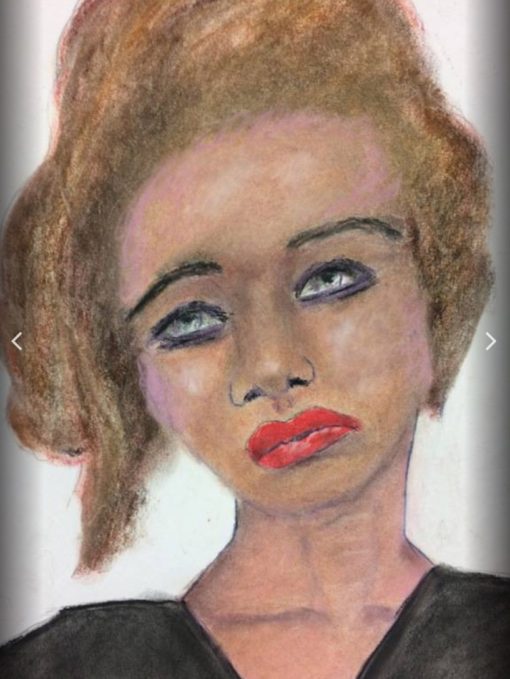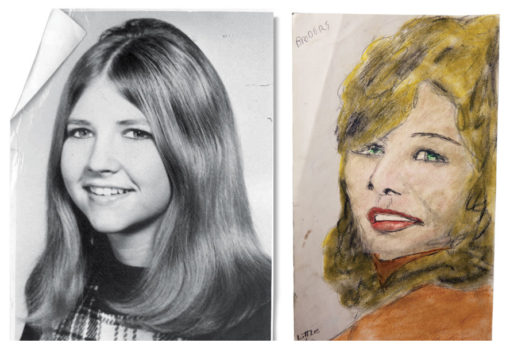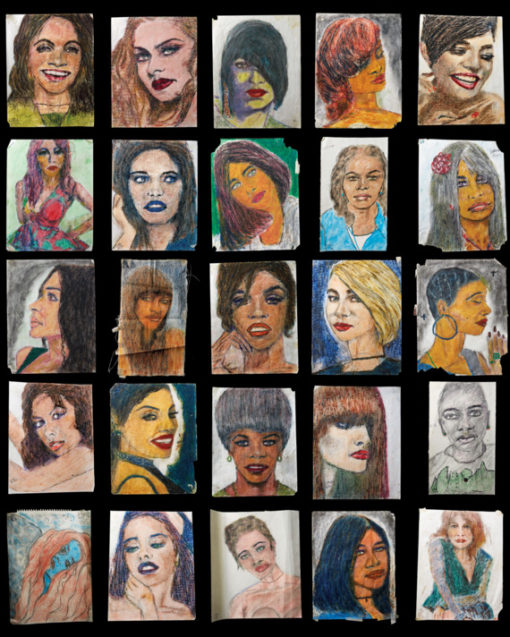Samuel Little is by all accounts a despicable human being. Convicted of the strangulation murders of three women, he has confessed to 90 killings between 1975 and 2005. FBI agents who interviewed him said Little remembered his victims and the killings in great detail, but he could provide no help with dates. To overcome this problem, Little gave them pictures of his victims that he had drawn from memory, mostly marginalized women who were involved in prostitution and addicted to drugs. As a result of his confession and these drawings, 50 cold-case murders have been solved.

Samuel Little, date, media, and dimensions unknown
Had he not turned out to be a notable murderer, and instead just a harmless unknown man in a room like Henry Darger, Samuel Little’s drawings would be rightfully praised as the work of a naïve virtuoso. But the most remarkable quality of Little’s drawings is the confirmed accuracy of his portraits, drawn and colored with the unschooled appeal so prevalent in Folk Art. By his own admission, drawing is his preferred pastime, and as a result he can “draw anything.” But since he now spends most of his cell time replaying the killings in his mind, it is “his babies” that he draws.

Samuel Little, date, dimensions and media unknown
Still, there’s an eerie liveliness to these portraits of women who are now known to be dead, and their smiling faces conflict with the screaming death they suffered. That’s the horror of these things, and yet the wonder as well. The fact that years after their murders, this man was able to draw recognizable portraits of his victims, is difficult to parse. Had these women passed through his life untouched, Little’s astounding ability would be called genius and not madness. Unfortunately, this accuracy could only have come from observation of his victims over a lengthy period of time, and under disturbingly violent circumstances. If that isn’t grotesque enough, consider that in a prison interview with Jillian Lauren, Little states, “I live in my mind now. With my babies. In my drawings.”

Denise Brothers, shown at left at age 15, was killed by Little in 1994, when she was 38.
The serial killer John Wayne Gacy is probably the best-known murderer to make art; the paintings he made while incarcerated are sold and exhibited worldwide. But this success is based partly on kitsch appeal; most of his paintings are self-portraits of himself as Pogo the Clown, the costume and persona he adopted when performing at children’s parties. The financial proceeds that Gacy made from the initial sale of his paintings were given to families of his victims, and that utility arguably justifies calling his paintings art; after all, that is how they were promoted at the time and still are. The problem is that the word “art” effectively neutralizes the loathing for his paintings which should be preeminent. Art is an excuse for a lot of things; but cashing in on the suffering of the deceased isn’t one of them.

Collection of drawings bySamuel Little
Unlike most drawings and paintings being made today, Little’s work serves a far greater purpose than mere wall decoration or the advancement of some subculture’s societal agenda. His drawings may have initially been made for his own perverse remembrance of the past, but now they serve to identify the people he brutally murdered, and it is this use that prohibits applying the word “art” to his drawings; very much the same way that a single-color canvas is considered art while a car painted an identical blue is not. And for critics and cultural analysts to call Little an artist is an honor he does not deserve; nor should “real” artists count him in their ranks. So, in these times, when Art has become the aegis under which so many meaningless things gain stature, it’s good to be reminded that some things cannot be called art; and remembering the dead should not be a spectator sport.

Samuel Little, detail of portrait


